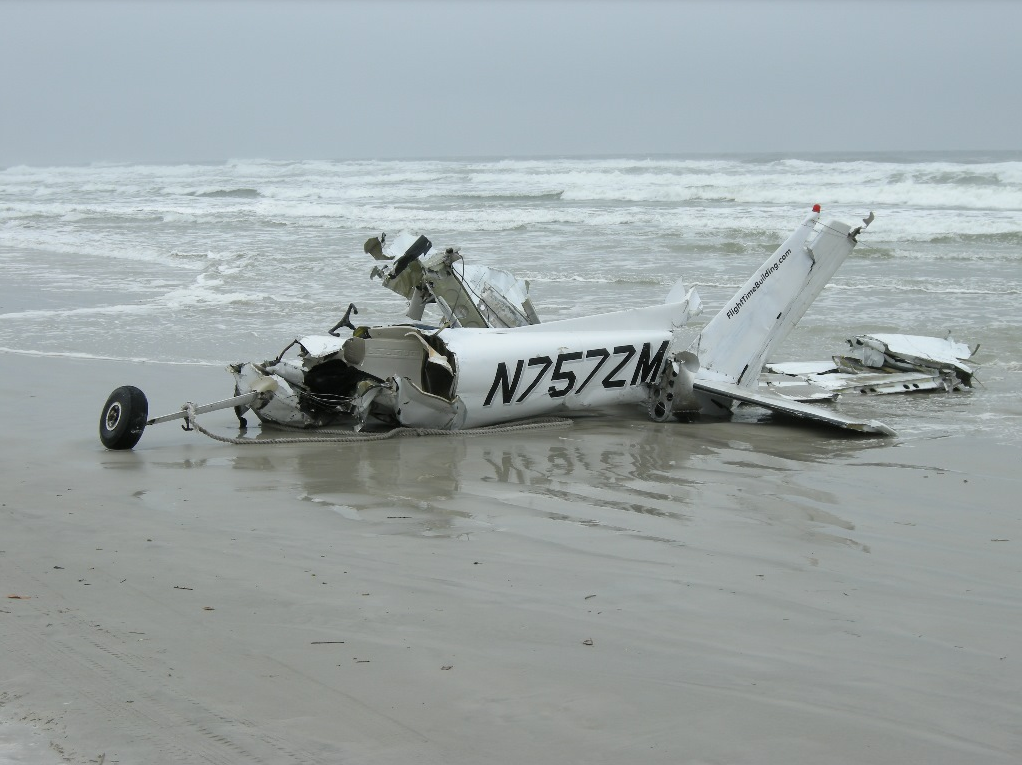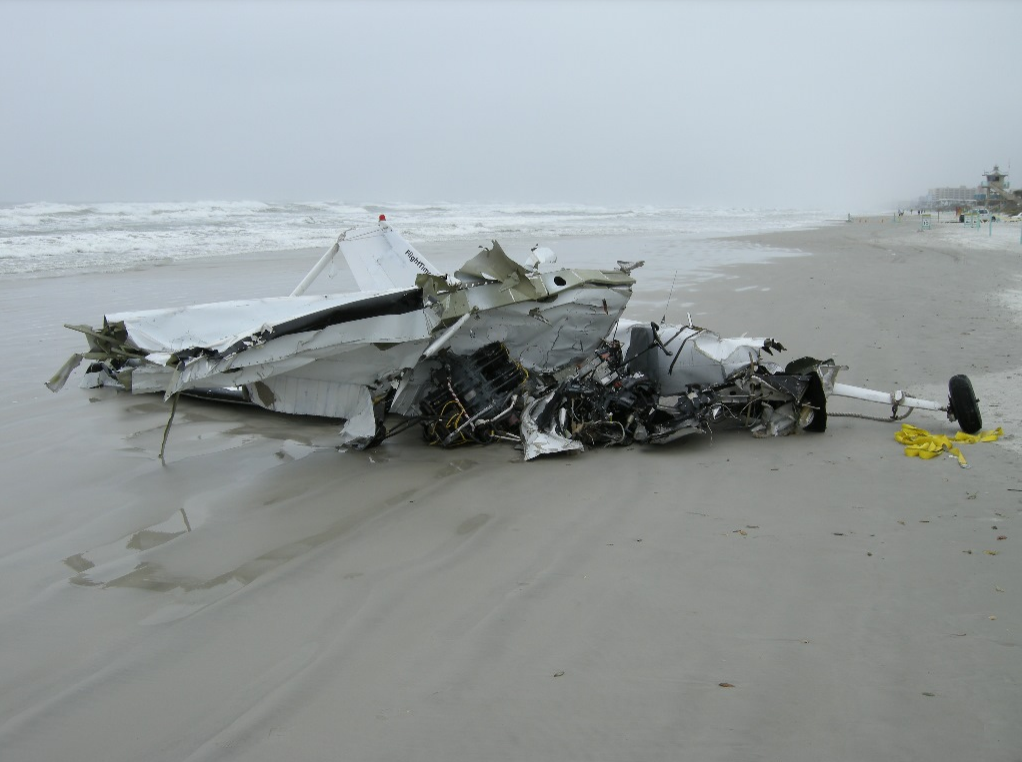
ASN Wikibase Occurrence # 172972
This information is added by users of ASN. Neither ASN nor the Flight Safety Foundation are responsible for the completeness or correctness of this information.
If you feel this information is incomplete or incorrect, you can submit corrected information.
| Date: | Tuesday 13 January 2015 |
| Time: | 20:58 |
| Type: |  Cessna 152 |
| Owner/operator: | Private |
| Registration: | N757ZM |
| MSN: | 15280134 |
| Year of manufacture: | 1977 |
| Total airframe hrs: | 12000 hours |
| Engine model: | Lycoming O-235-L2C |
| Fatalities: | Fatalities: 1 / Occupants: 1 |
| Aircraft damage: | Substantial |
| Category: | Accident |
| Location: | New Smyrna Beach, FL -
 United States of America United States of America
|
| Phase: | Approach |
| Nature: | Private |
| Departure airport: | Massey Ranch Airpark, FL (X50) |
| Massey Ranch Airpark, FL (X50) | |
| Investigating agency: | NTSB |
| Confidence Rating: |
On January 13, 2015, about 2058 eastern standard time, a Cessna 152, N757ZM, collided with a public beach at New Smyrna Beach, Florida. The commercial pilot was fatally injured and the airplane was substantially damaged by impact forces. The airplane was registered to a private company and was operated by the pilot under the provisions of Title 14 Code of Federal Regulations (CFR) Part 91 as a personal flight. Night, instrument meteorological conditions (IMC) prevailed for the flight, and no flight plan was filed. The local flight originated from Massey Ranch Airpark (X50), Edgewater, Florida, about 2040.
The commercial pilot was in the process of purchasing a block of flight time with the intent of building time toward an additional rating. According to the operator, the pilot did not complete the mandatory checkout. However, she possessed the keys to the airplane since she had flown the previous day with an instructor, but he did not approve her for solo flight because he believed she required additional practice landing the airplane with an instructor onboard. On the day of the accident, she flew an undetermined number of local, solo flights without the knowledge of the operator. The accident flight was initiated at night, presumably with the intent of operating in the local airport traffic pattern. About 7 minutes into the flight, the pilot likely encountered instrument meteorological conditions (IMC) and requested assistance from air traffic control.
An air traffic controller attempted to provide the pilot with radar vectors to a nearby airport; however, the pilot was unable to visually acquire that airport. The controller then observed the airplane on radar at 600 ft and descending and directed the pilot to climb and turn. A short time later, radar and radio contact were lost; the airplane had crashed. The level of damage and fragmentation of the wreckage was consistent with ground impact at a high velocity. The flight was conducted on a dark, moonless night, under an overcast ceiling, and the final portion of the flight was over the ocean. These factors would have reduced the pilot’s ability to perceive the natural horizon and increased her risk of spatial disorientation.
Although the pilot held an instrument rating and had recently completed an instrument proficiency check, on the night of the accident, she did not demonstrate the skills necessary to control an airplane in IMC. She also did not display the ability to adequately communicate her situation to the controller, nor did she seem to understand or comply with the assistance offered to her. Review of autopsy results and postaccident toxicological testing showed no evidence of any physiologically induced incapacitation or other impairment.
During the sequence of events leading up to the accident, the pilot communicated with two air traffic controllers. The pilot described that she was operating in conditions that limited her ability to navigate and potentially affected her ability to control the airplane under visual flight rules (VFR). Although the actions of the controllers did not directly contribute to the pilot’s loss of control while attempting to fly under VFR in IMC, the controllers did not act in accordance with Federal Aviation Administration (FAA) guidance that dictates how to assist pilots experiencing this type of emergency. Specifically, the controllers did not ascertain if the pilot was qualified and capable of IFR flight nor did they attempt to locate and direct the pilot toward the nearest areas reporting visual meteorological conditions. Further, a controller assisting the accident controller had the opportunity to solicit a pilot report from another pilot in a nearby airplane to ascertain if that airplane was operating above the reported IMC but did not do so. During postaccident interviews, the air traffic controllers indicated that they had not received FAA-required evidence-based simulation training on emergencies and described the computer-based emergency training that they received as poor quality.
Probable Cause: The pilot's failure to maintain control of the airplane while operating under visual flight rules (VFR) in night, instrument meteorological conditions, likely due to spatial disorientation. Contributing to the outcome was the radar controller's failure to follow published guidance for providing assistance to VFR pilots having difficulty flying in instrument conditions.
Accident investigation:
 |
|
Sources:
NTSB
FAA register: http://registry.faa.gov/aircraftinquiry/NNum_Results.aspx?NNumbertxt=757ZM
Location
Images:


Photos: NTSB
Revision history:
| Date/time | Contributor | Updates |
|---|---|---|
| 14-Jan-2015 05:45 | Geno | Added |
| 14-Jan-2015 06:51 | Geno | Updated [Location, Departure airport, Source, Narrative] |
| 14-Jan-2015 14:40 | Anon. | Updated [Registration, Operator, Damage] |
| 14-Jan-2015 17:39 | Geno | Updated [Cn, Source, Narrative] |
| 14-Jan-2015 20:05 | harro | Updated [Operator] |
| 28-Jan-2015 19:16 | Geno | Updated [Time, Operator, Phase, Nature, Departure airport, Destination airport, Source, Narrative] |
| 21-Dec-2016 19:28 | ASN Update Bot | Updated [Time, Damage, Category, Investigating agency] |
| 01-Dec-2017 11:47 | ASN Update Bot | Updated [Operator, Other fatalities, Nature, Departure airport, Destination airport, Source, Narrative] |
| 11-Sep-2022 16:19 | Captain Adam | Updated [Other fatalities, Location, Phase, Departure airport, Destination airport, Source, Narrative, Photo] |
| 11-Sep-2022 16:19 | Captain Adam | Updated [Photo] |
Corrections or additions? ... Edit this accident description
The Aviation Safety Network is an exclusive service provided by:


 ©2024 Flight Safety Foundation
©2024 Flight Safety Foundation